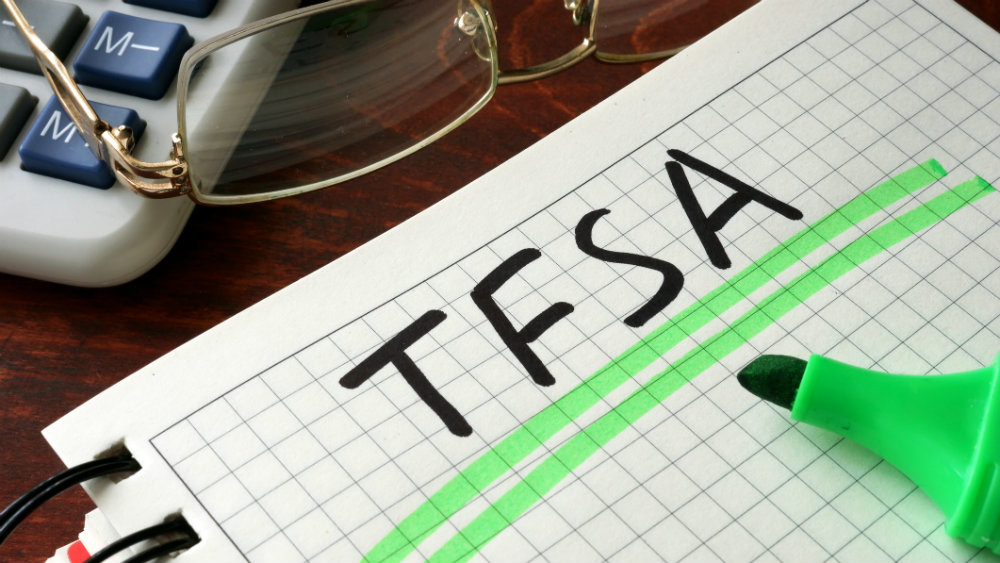It’s never too late to start saving and putting money into your TFSA. Below, I’ll show you how saving $500 a month could help you get your portfolio to the $1,000,000 mark.
The key is to find a good dividend stock to begin with. For this example, I’ll use Emera Inc (TSX:EMA). The utility company has a stable business model, and yet it has grown over the years, with sales more than doubling in just three years.
And there are still more opportunities for the company to continue to expand. With a strong dividend of around 4.2%, there are many potential ways that the stock can rise in value.
It’s a perfect stock to put inside of a TFSA, as it won’t matter whether you earn income from dividends or capital appreciation. Either way, your profits from that income will be will be tax free.
The model
Previously, I had looked at how you can grow a big lump sum amount into $1,000,000. However, not everyone has that capability, and being able to save $500 per month may be much more realistic.
The reason I chose $500 is that would allow you to maximize your TFSA contribution limits, which are currently set to $6,000 a year. However, if you have the contribution room from previous years, you can certainly invest more.
In this model, I’ll assume that TFSA is still around 35 years from now and that annual contribution limits remain at $6,000. I’ll also assume that investors will invest $6,000 in Emera stock at the beginning of each year and that its dividend will average 4.1% on both new and old contributions, as opposed to complicating the calculations too much by incorporating dividend growth into the mix. Another assumption is that the dividends will not be reinvested back into the stock.
Finally, in five years, Emera’s share price has risen by about 42%, which means that on average, it has risen by approximately 7.26% per year. I’ll assume that the stock will continue to grow at this rate. Based on the above assumptions, here’s how the results could look like over the next 35 years:
| Year | Contribution | Total Contributions | Beginning Balance | Growth | Ending Balance | Dividends | Total Dividends | Portfolio + Dividends |
| 1 | $6,000 | $6,000 | $6,000 | $436 | $6,436 | $246 | $246 | $6,682 |
| 2 | $6,000 | $12,000 | $12,436 | $903 | $13,339 | $492 | $738 | $14,077 |
| 3 | $6,000 | $18,000 | $19,339 | $1,405 | $20,744 | $738 | $1,476 | $22,220 |
| 4 | $6,000 | $24,000 | $26,744 | $1,943 | $28,687 | $984 | $2,460 | $31,147 |
| 5 | $6,000 | $30,000 | $34,687 | $2,520 | $37,207 | $1,230 | $3,690 | $40,897 |
| 6 | $6,000 | $36,000 | $43,207 | $3,139 | $46,346 | $1,476 | $5,166 | $51,512 |
| 7 | $6,000 | $42,000 | $52,346 | $3,803 | $56,149 | $1,722 | $6,888 | $63,037 |
| 8 | $6,000 | $48,000 | $62,149 | $4,515 | $66,664 | $1,968 | $8,856 | $75,520 |
| 9 | $6,000 | $54,000 | $72,664 | $5,279 | $77,943 | $2,214 | $11,070 | $89,013 |
| 10 | $6,000 | $60,000 | $83,943 | $6,098 | $90,042 | $2,460 | $13,530 | $103,572 |
| 11 | $6,000 | $66,000 | $96,042 | $6,977 | $103,019 | $2,706 | $16,236 | $119,255 |
| 12 | $6,000 | $72,000 | $109,019 | $7,920 | $116,939 | $2,952 | $19,188 | $136,127 |
| 13 | $6,000 | $78,000 | $122,939 | $8,931 | $131,871 | $3,198 | $22,386 | $154,257 |
| 14 | $6,000 | $84,000 | $137,871 | $10,016 | $147,887 | $3,444 | $25,830 | $173,717 |
| 15 | $6,000 | $90,000 | $153,887 | $11,180 | $165,066 | $3,690 | $29,520 | $194,586 |
| 16 | $6,000 | $96,000 | $171,066 | $12,428 | $183,494 | $3,936 | $33,456 | $216,950 |
| 17 | $6,000 | $102,000 | $189,494 | $13,767 | $203,261 | $4,182 | $37,638 | $240,899 |
| 18 | $6,000 | $108,000 | $209,261 | $15,203 | $224,463 | $4,428 | $42,066 | $266,529 |
| 19 | $6,000 | $114,000 | $230,463 | $16,743 | $247,206 | $4,674 | $46,740 | $293,946 |
| 20 | $6,000 | $120,000 | $253,206 | $18,395 | $271,602 | $4,920 | $51,660 | $323,262 |
| 21 | $6,000 | $126,000 | $277,602 | $20,168 | $297,769 | $5,166 | $56,826 | $354,595 |
| 22 | $6,000 | $132,000 | $303,769 | $22,069 | $325,838 | $5,412 | $62,238 | $388,076 |
| 23 | $6,000 | $138,000 | $331,838 | $24,108 | $355,945 | $5,658 | $67,896 | $423,841 |
| 24 | $6,000 | $144,000 | $361,945 | $26,295 | $388,240 | $5,904 | $73,800 | $462,040 |
| 25 | $6,000 | $150,000 | $394,240 | $28,641 | $422,882 | $6,150 | $79,950 | $502,832 |
| 26 | $6,000 | $156,000 | $428,882 | $31,158 | $460,039 | $6,396 | $86,346 | $546,385 |
| 27 | $6,000 | $162,000 | $466,039 | $33,857 | $499,897 | $6,642 | $92,988 | $592,885 |
| 28 | $6,000 | $168,000 | $505,897 | $36,753 | $542,650 | $6,888 | $99,876 | $642,526 |
| 29 | $6,000 | $174,000 | $548,650 | $39,859 | $588,509 | $7,134 | $107,010 | $695,519 |
| 30 | $6,000 | $180,000 | $594,509 | $43,191 | $637,699 | $7,380 | $114,390 | $752,089 |
| 31 | $6,000 | $186,000 | $643,699 | $46,764 | $690,463 | $7,626 | $122,016 | $812,479 |
| 32 | $6,000 | $192,000 | $696,463 | $50,597 | $747,061 | $7,872 | $129,888 | $876,949 |
| 33 | $6,000 | $198,000 | $753,061 | $54,709 | $807,770 | $8,118 | $138,006 | $945,776 |
| 34 | $6,000 | $204,000 | $813,770 | $59,120 | $872,889 | $8,364 | $146,370 | $1,019,259 |
| 35 | $6,000 | $210,000 | $878,889 | $63,851 | $942,740 | $8,610 | $154,980 | $1,097,720 |
If you were to start by the age of 30, then you’d still have time to spare before retirement to hit the $1,000,000 mark. Under this model, it would take about 34 years to reach the target amount. However, that can be accelerated by investing more at any point in time or if the returns from holding Emera stock change.
Bottom line
There are many assumptions built into the above approach, and it’s impossible to know how things will play out, especially over 35 years. Emera could be part of a different company by then. However, what’s undeniable is the impact that having a good growth stock can have on a portfolio.
Of the total $1,097,720 ending balance at year 35, $210,000 is made up of the annual contributions, $732,740 came from the growth accumulated over the years, and $154,980 is from the dividend income.
Even if dividend payments increase over the years, the bulk of the increase in value will come from the growth the stock achieves over time rather than the dividend income earned.
It’s important to note that this example is purely for illustrative purposes and by no means is it a guarantee. But the key takeaway from all this is that by contributing to your TFSA into a good growth stock every year, you could be setting yourself up for a great retirement.








